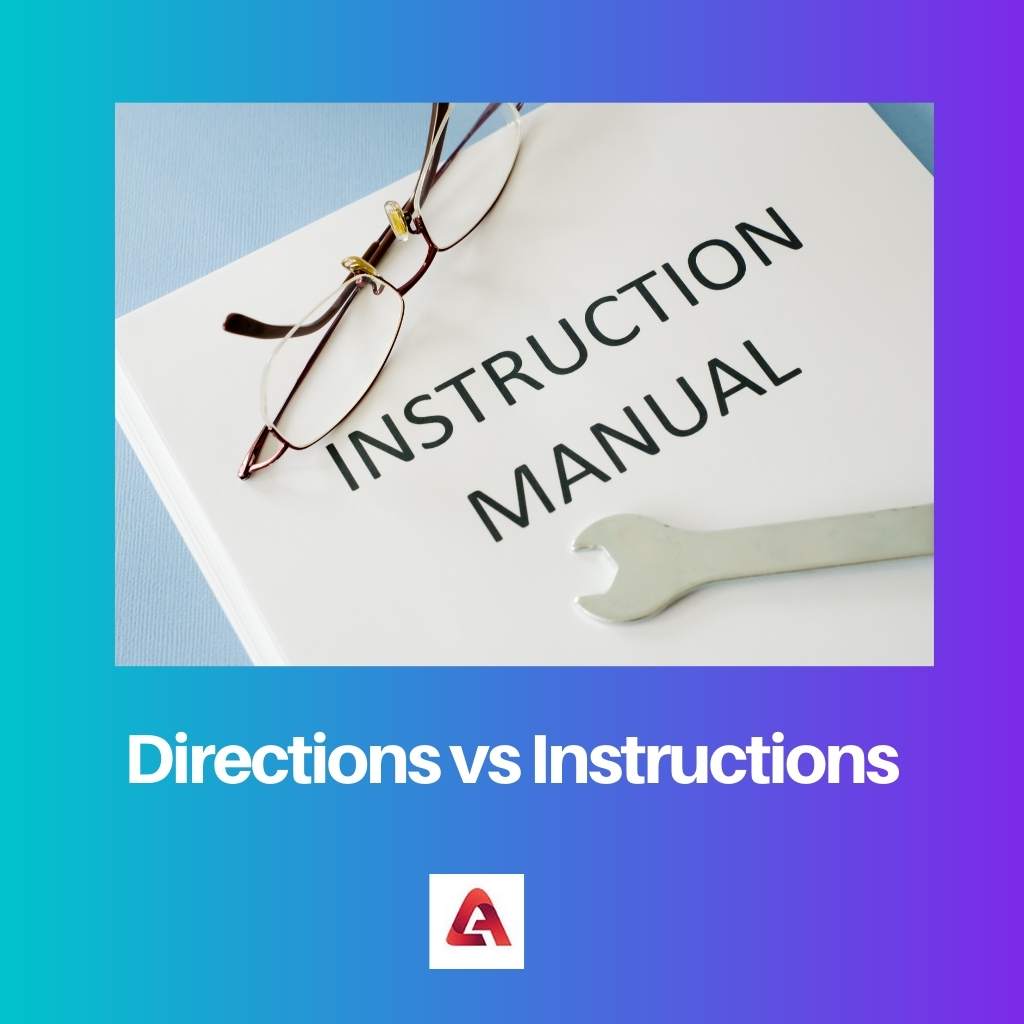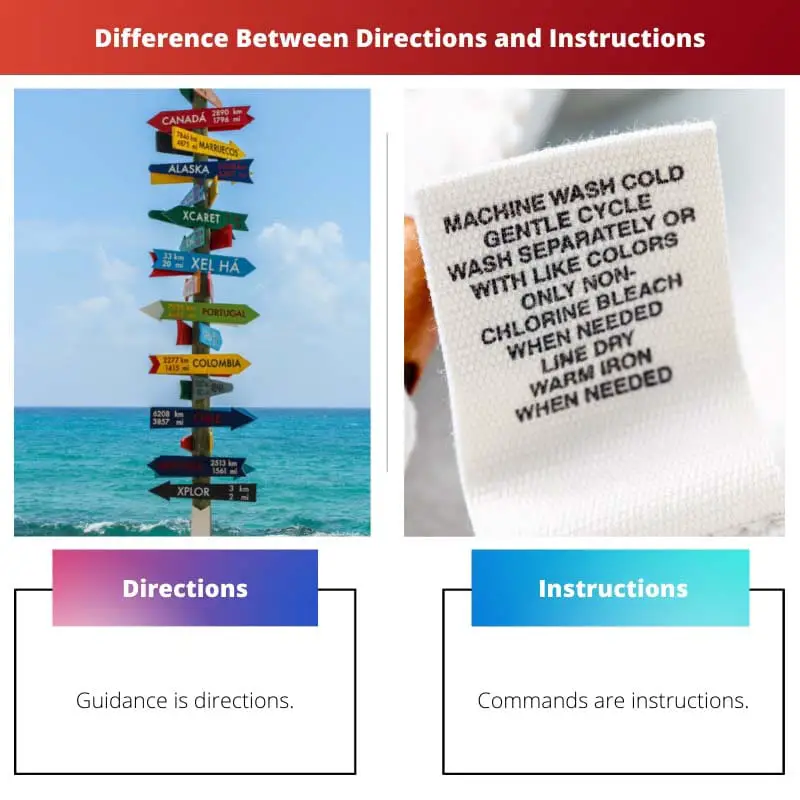Directions and instructions are used in daily scenarios by individuals. People have guidelines and guidance to exchange information.
Key Takeaways
- Directions refer to indications or guidelines that tell someone how to get to a particular place, while instructions refer to steps or procedures that tell someone how to perform a task or use a product.
- Directions are used to navigate physical locations, while instructions are used to complete specific tasks or operations.
- Directions provide information about the location and route, while instructions provide information about the sequence of steps to follow.
Directions vs. Instructions
Directions refer to the detailed information on how to go somewhere or how to do something, involving physical movement or action. Instructions, on the other hand, refer to a detailed information on how to do something, specifically a task, a job, or a test.

Directions are linked to sites. People sometimes ask for advice when attempting to get to a particular spot. The general principles are North, south, east, West, top, down, left, and right.
Instructions or steps required for a given occurrence are directives. Instructions on completing a specific assignment are focused. They have a context and brief clarification of the steps and the performance.
Comparison Table
| Parameters of Comparison | Directions | Instructions |
|---|---|---|
| Meaning | Guidance is directions | Commands are instructions. |
| Act | Directive | Knowledge means instruction |
| Implies | No spatial focus. | Space guidance |
| Goals | Worse formal and less abrasive | More structured and abrasive |
| Characteristic | Power to the governor a physical route. | Context and a brief clarification of the steps and the performance |
What are the Directions?
The term “direct,” which means guide, is rooted in the path. Reference to performing a task can be used as a guide. Instructions Dissolve a feature in a particular order into a sequence of acts.
For instance, you might ask for a 2-minute skip to the metaphor of your recipes in olive oil to sauté the onions. Leadership is only one part of the process: the course or control of the learner’s behavior.
Guidance means that you try to influence someone. Guidance implies the power to govern or a physical route (go left, right, etc.)
Legislation is primarily an authority order that is issued. A directive is an order issued by an official. A Directive will establish policy, attach liabilities, identify objectives, and delegate powers.

What are the Instructions?
The guidelines concern learning and construction in particular. If someone instructs you to do something, you don’t know how to do that now. It implies a little bit of instruction.
Instruction is the operation to be performed by the processor on load. Instructions are classified as instructions, paths, or commands, while guidelines are general law, theory, or advice.
Instructions are linked primarily to teaching or learning various learning methods, covering studies, tasks, exams, lessons, tutoring, and more.
There are instructions to train anything to anyone. His examples include cooking instructions, scarfing instructions, structure instructions for a dollhouse, mission instructions, instructions for completing all electrical equipment, etc.
Another case in point: a geographic area to be organized for an epidemic may be set out by the World Health Organization (WHO).

Main Differences Between Directions and Instructions
- Directions are the general trend toward future action, whereas instructions are specific guidance or experience provided.
- The instructions are the rules, whereas directions are the orders.


I think the article could have included more examples to illustrate the differences discussed.
While examples would be helpful, the article was clear in its explanations and differentiations.
I found the article quite dry and lacking in humor. It could’ve used some lighthearted moments to make it more engaging.
I understand your perspective, but the seriousness of the topic might not lend itself well to humor.
That’s a valid point. Humor can certainly enhance the reader’s experience.
I think the article could’ve delved into the historical context of directions and instructions, giving readers a fuller understanding of their origins and evolution.
I agree. Understanding the historical foundations of these concepts would be beneficial.
That would have been an interesting addition, providing context to the concepts.
This article is highly informational. I appreciate the thorough comparison provided.
I share the same sentiment. The comparisons made are incredibly useful.
The article provided a useful comparison between directions and instructions, offering clear insights into their differences.
The article provides clear and concise information on the differences between directions and instructions. It’s good to know how they are distinct from each other.
I agree. Understanding these differences is really helpful.
An intriguing topic presented in an educational and informative manner.
The article failed to maintain engagement, making it quite dull to read.
I respectfully disagree. The article was informative and engaging, offering valuable insights.
The article is too repetitive. It could’ve been more concise and to the point.
I understand your point, but the repetition is necessary to emphasize the distinctions between directions and instructions.
I found the repetition helpful in reinforcing the key points.
The information presented is appropriately detailed and well-organized.
I couldn’t agree more. The structure and detail are commendable.
Absolutely, the thoroughness is impressive.